How to Fix ‘Make Sure OneDrive is Running on your PC’ Error?
You may encounter issues opening a file in OneDrive if certain applications on your system are interfering with OneDrive’s operations. Additionally, using a VPN client or having a corrupt OneDrive installation may lead to errors.
The user typically faces problems when attempting to open a file from the OneDrive folder on their PC, regardless of file type, and receives the following message:
Can’t open this file. Make sure OneDrive is running on your PC, then try again.
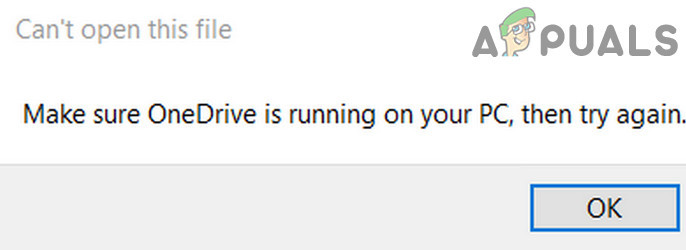
Before attempting the solutions to get OneDrive operational on your PC, it’s crucial to back up the essential data in your PC’s OneDrive folder as a precaution. Also, make sure that your network connection is not set as metered in the system’s Settings.
To exclude the possibility of a server outage, verify that OneDrive web is functioning correctly. Additionally, investigate whether a startup script deployed by your organization or an application such as Decrapifier could be the source of the problem. Furthermore, ensure that your PC user account is password-protected and that there is ample storage space available on your system drive.
Solution 1: Enable the OneDrive Sync
If OneDrive syncing is paused, it may cause files to be unavailable, thus triggering the issue. In this case, enabling OneDrive sync may resolve the problem.
- Right-click on the OneDrive icon in the system’s tray (you may need to expand the hidden icons) and select Help & Settings.
- Choose Resume Syncing from the menu, then wait for the sync to complete.
- Reboot your PC and check if the OneDrive error has been resolved.
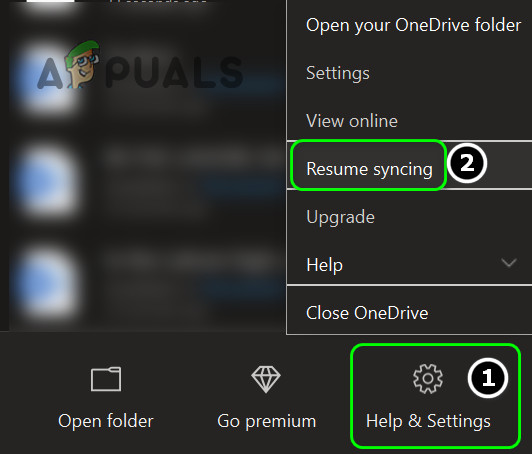
Resume Syncing of OneDrive
If the issue is on a laptop, ensure that it is not in any battery-saving mode, which could hinder syncing. Additionally, in OneDrive settings, ensure that the option ‘Automatically Pause Sync When This Device is in Battery Saver Mode’ is disabled.
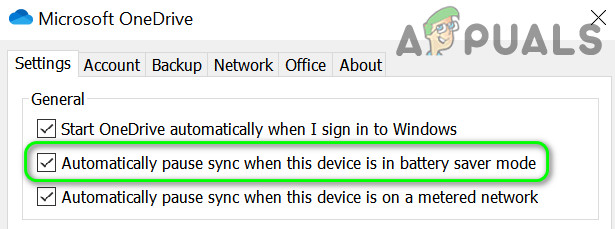
Solution 2: Re-launch OneDrive
A temporary glitch in OneDrive’s communication or application modules could be causing the issue. Relaunching the application may clear the glitch.
- In the system’s tray, right-click the OneDrive icon and select Close OneDrive. Confirm by clicking the Close OneDrive button.
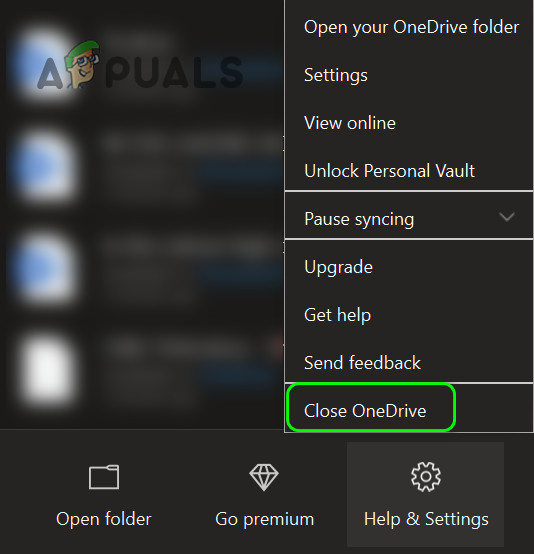
Close OneDrive from the System’s Tray - Click on the Windows button and type OneDrive in the search bar. In the results shown, choose OneDrive.
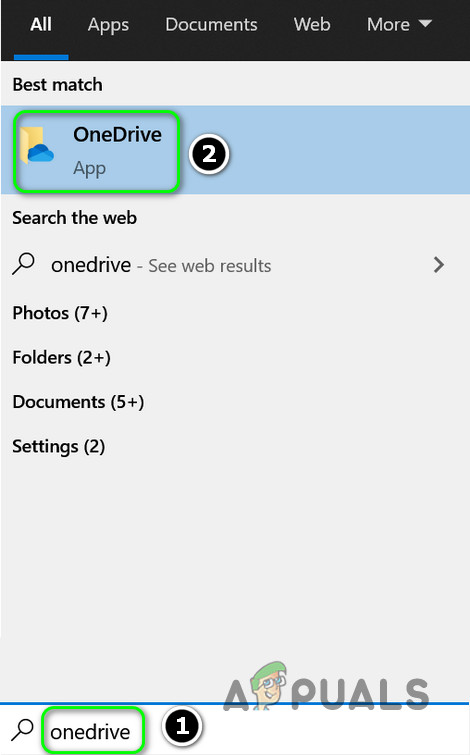
Open OneDrive from the Startup Menu - Check if the OneDrive issue is resolved.
Solution 3: Enable OneDrive at System’s Startup
If OneDrive is disabled at boot or fails to load with the system’s startup, you may face the issue in question. Enabling OneDrive to launch at system startup may help.
- Open the system’s tray and right-click on the OneDrive icon, then select Help & Settings, followed by Settings.
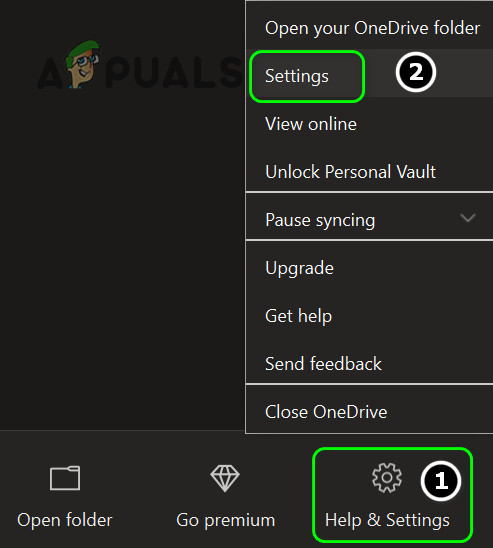
Open OneDrive Settings - Select the Start OneDrive Automatically When I Sign In to Windows checkbox and click Apply/OK.
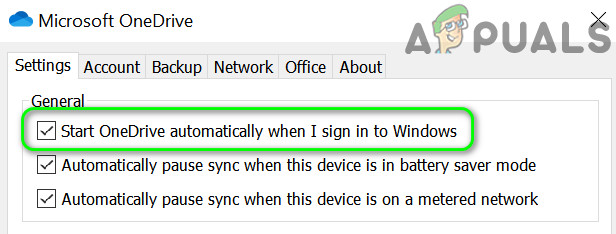
Enable Start OneDrive Automatically When Sign In to Windows - Right-click on the Windows button and choose Task Manager from the Power User menu.
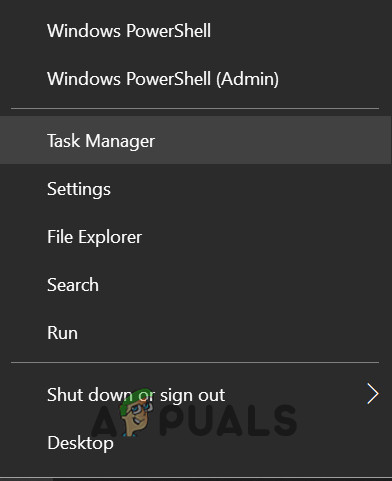
Open the Task Manager from the Quick Access Menu - Navigate to the Startup tab, right-click on Microsoft OneDrive, and select Enable.
- Reboot your PC and check if the OneDrive issue has been resolved.
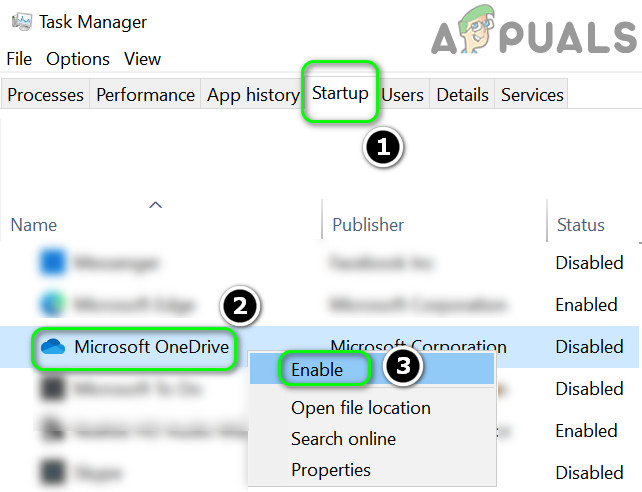
Enable OneDrive in the Startup tab of the Task Manager
Solution 4: Disable the ‘Files on Demand’ Feature and Enable ‘Always Keep on This Device’
The ‘Files on Demand’ feature saves bandwidth and hard drive space but may cause unavailability of local files, which can lead to errors if a network glitch occurs. Disabling this feature may solve the problem.
- Right-click the OneDrive icon in the system’s tray (you might need to show hidden icons) and choose Help & Settings. Then, open Settings.
- Uncheck “Save Space and Download Files as You Use Them” in the Settings tab and click Apply/OK.
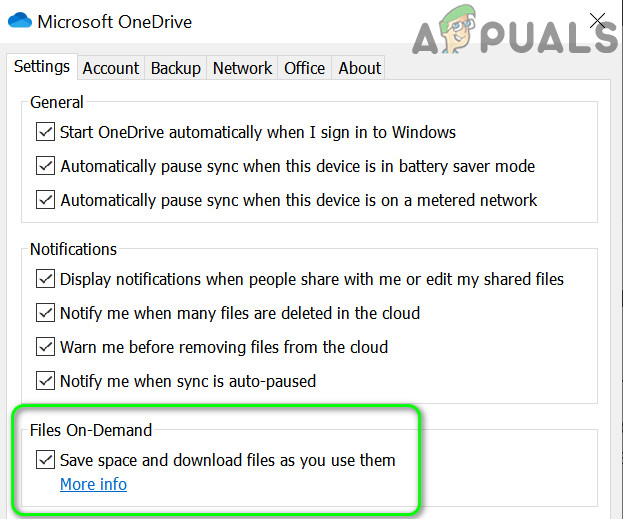
Disable Files on Demand in the OneDrive Settings - Reboot your PC and see if OneDrive is functioning as expected.
- If the problem persists, double-click the OneDrive icon in the system’s tray and select the problematic files.
- Right-click on the files and select Always Keep on This Device.
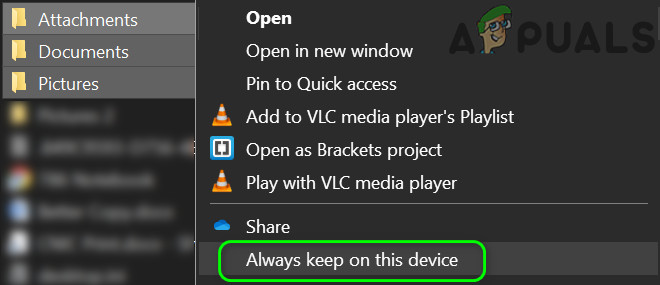
Select the Always Keep on This Device Option for the Problematic Files - Reboot your PC and confirm that the OneDrive issue is resolved.
Solution 5: Disable the VPN Client and Revert the Latest Network Change
Your access to OneDrive might be restricted by Microsoft as a security measure due to a recent network change or the use of a VPN client (especially if connecting from a foreign country). Disabling the VPN client or reverting the recent network change may resolve this issue.
- Disable your system’s VPN client by right-clicking its icon in the system’s tray and selecting Disable. Check if the OneDrive issue has been resolved. If you’re not using a VPN, reverting the latest network change (such as switching from a metered connection) might help.
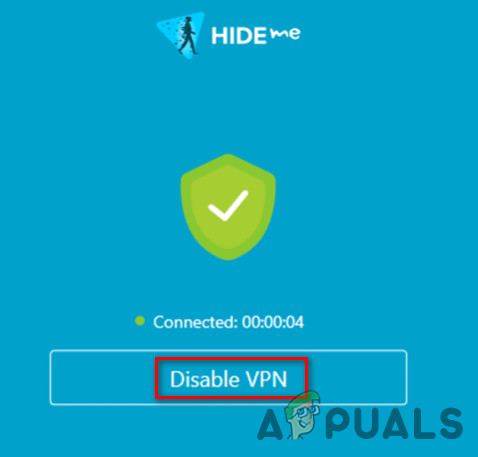
Disable the VPN Client - If the problem persists, try removing or re-adding your account to OneDrive.
Solution 6: Remove Conflicting Applications
OneDrive may display an error if any installed applications are interfering with its operations (examples being iCloud). Removing these conflicting applications may solve the issue. You can identify the conflicting application by performing a clean boot. Here, we’ll address the removal process for iCloud, but ensure you back up essential data first.
- Right-click the Windows button and select Apps & Features from the Power User menu.
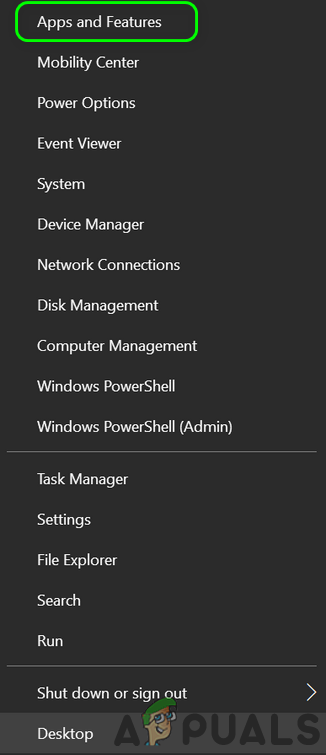
Open Apps & Features - Expand iCloud, then click on Uninstall.
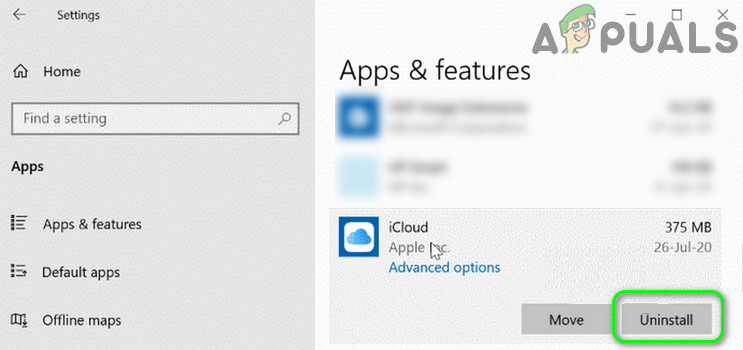
Uninstall the iCloud from Windows Settings - Follow the prompts to complete the uninstallation of iCloud, then reboot your PC.
- Upon reboot, check if the OneDrive issue has been resolved.
Solution 7: Relink the PC and Revert the OneDrive Folder to Its Default Location
If you have moved the OneDrive folder to a different location on your PC (perhaps leading to permission issues), setting the folder back to its default location may fix the file error.
- Right-click the OneDrive icon in the system’s tray and select Help & Settings.
- Go to the Settings section and switch to the Account tab.
- Click on Unlink This PC and confirm the action.
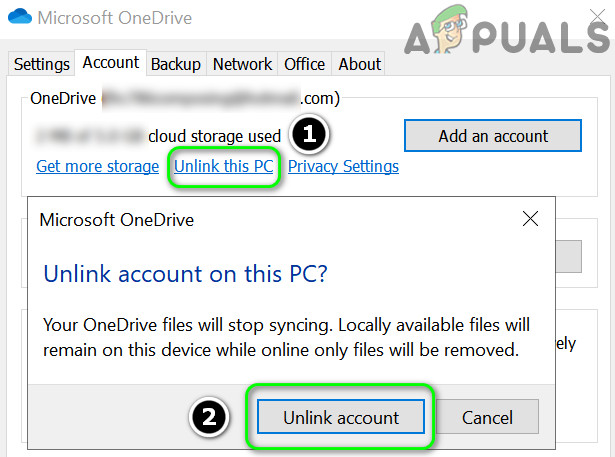
Unlink Your PC in the OneDrive Settings - Reboot your computer, launch OneDrive, and sign in with your Microsoft credentials upon restarting.
- Under the Your OneDrive Folder is Here option, click on Change Location and set it to the default path:
\Users\%Username%\OneDrive
(Copy and paste this path into the address bar of the OneDrive setup window.)
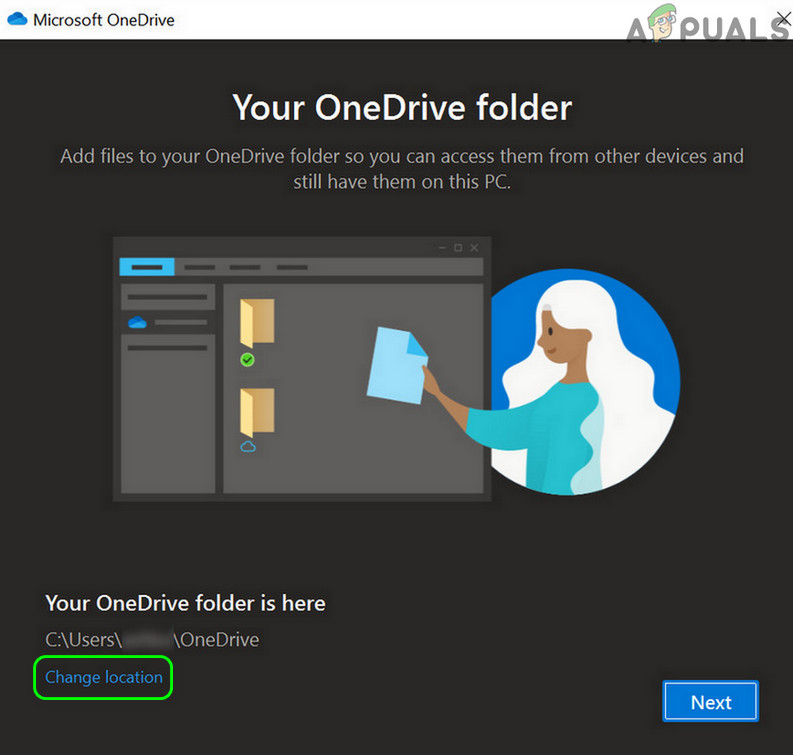
Change Location of the OneDrive Folder - If prompted to create a new folder, do so to avoid conflicts with existing files and folders. Then follow the setup prompts for OneDrive.
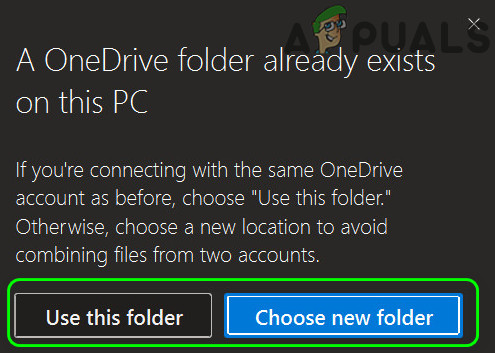
Select the Folder in the OneDrive Setup as Per Your Case - Reboot your PC and verify that OneDrive is functioning correctly.
Solution 8: Reset the OneDrive Application to Defaults
If the OneDrive folder or application is corrupt, resetting OneDrive to its default settings may resolve issues. Remember to back up your essential data first.
- Right-click on the Windows key to open the Power User menu and choose Run.
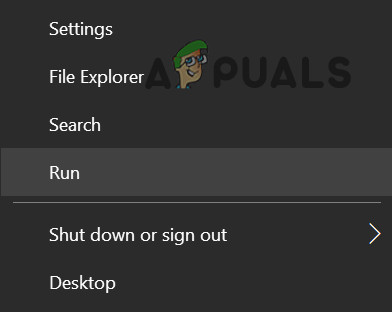
Open the Run Command From the Quick Access Menu - Navigate to the following directory:
%LOCALAPPDATA%\Microsoft\OneDrive\Update
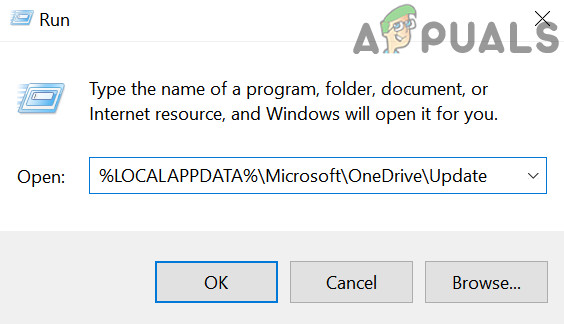
Open the OneDrive AppData Folder - Execute the OneDrive.exe file and follow the setup prompts for first-time use. If OneDrive.exe is missing, execute the file from this directory:
%localappdata%\Microsoft\OneDrive\
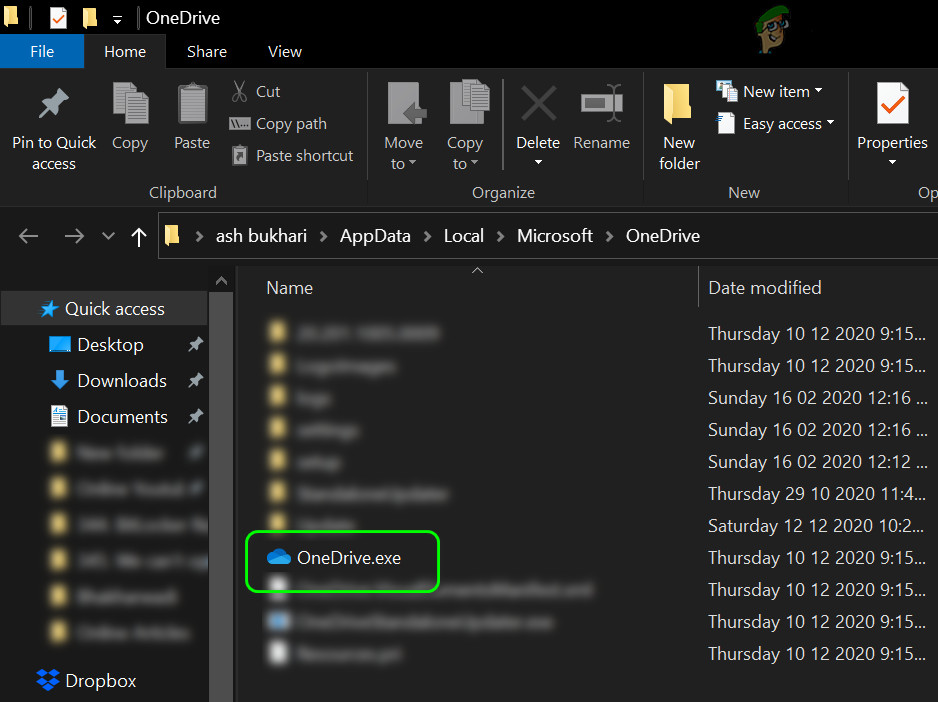
Launch OneDrive.exe from the Local App Data Folder - Check if the OneDrive issue is resolved.
- If not, run the following command in the Run box:
%localappdata%\Microsoft\OneDrive\onedrive.exe /reset
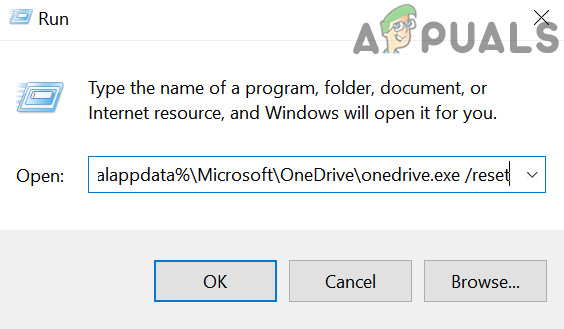
Reset the OneDrive Application to Defaults - If the OneDrive icon doesn’t appear in the system tray after a few minutes, execute the following command in the Run box:
%localappdata%\Microsoft\OneDrive\onedrive.exe
- Sign in to OneDrive and confirm that it is functioning correctly.
Solution 9: Reinstall OneDrive
If the issue has not been resolved, it’s likely due to a corrupt installation of OneDrive. Reinstalling the OneDrive application may solve the problem. Ensure you have a backup of essential data before proceeding.
- Right-click on the Windows button and choose Apps & Features from the Power User menu.
- Locate OneDrive, expand it, and click the Uninstall button.
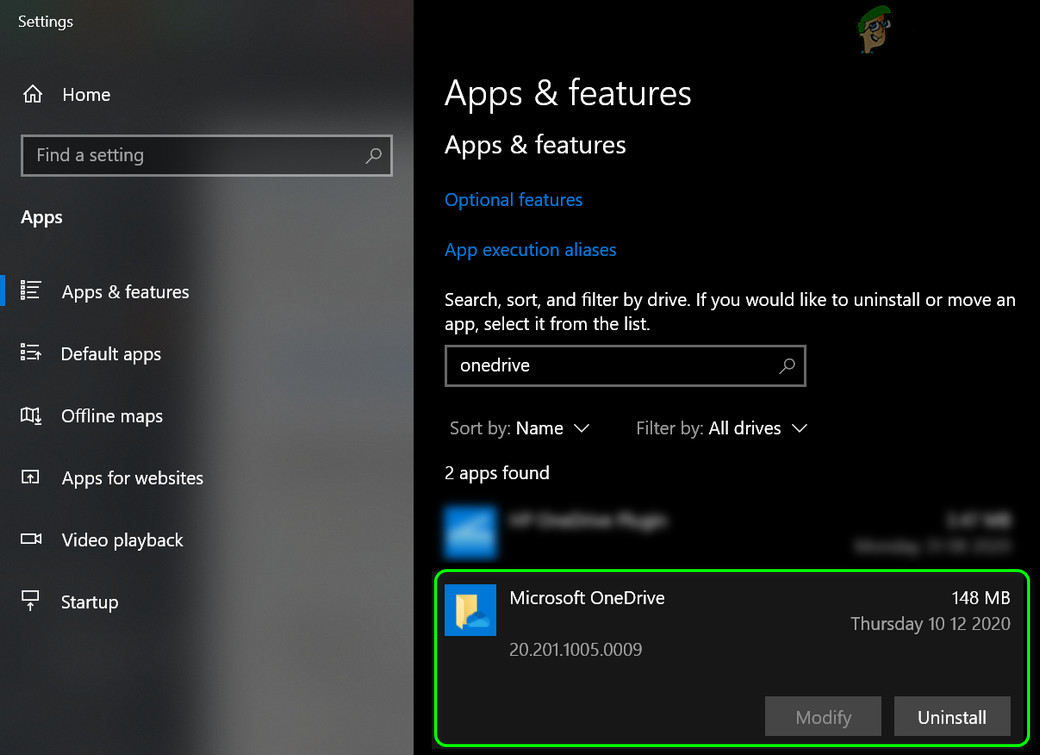
Uninstall OneDrive - Confirm the uninstallation by clicking on the Uninstall button again and follow through the process.
- Reboot your PC and, once rebooted, download and install the latest version of OneDrive from Microsoft’s official website.
- After installation, open OneDrive and sign in with your Microsoft credentials.
- Wait until the sync process completes, and check if OneDrive is now operating properly.
If the problem still persists after trying all these solutions, you might need to continue using OneDrive files online until the issue is resolved.




